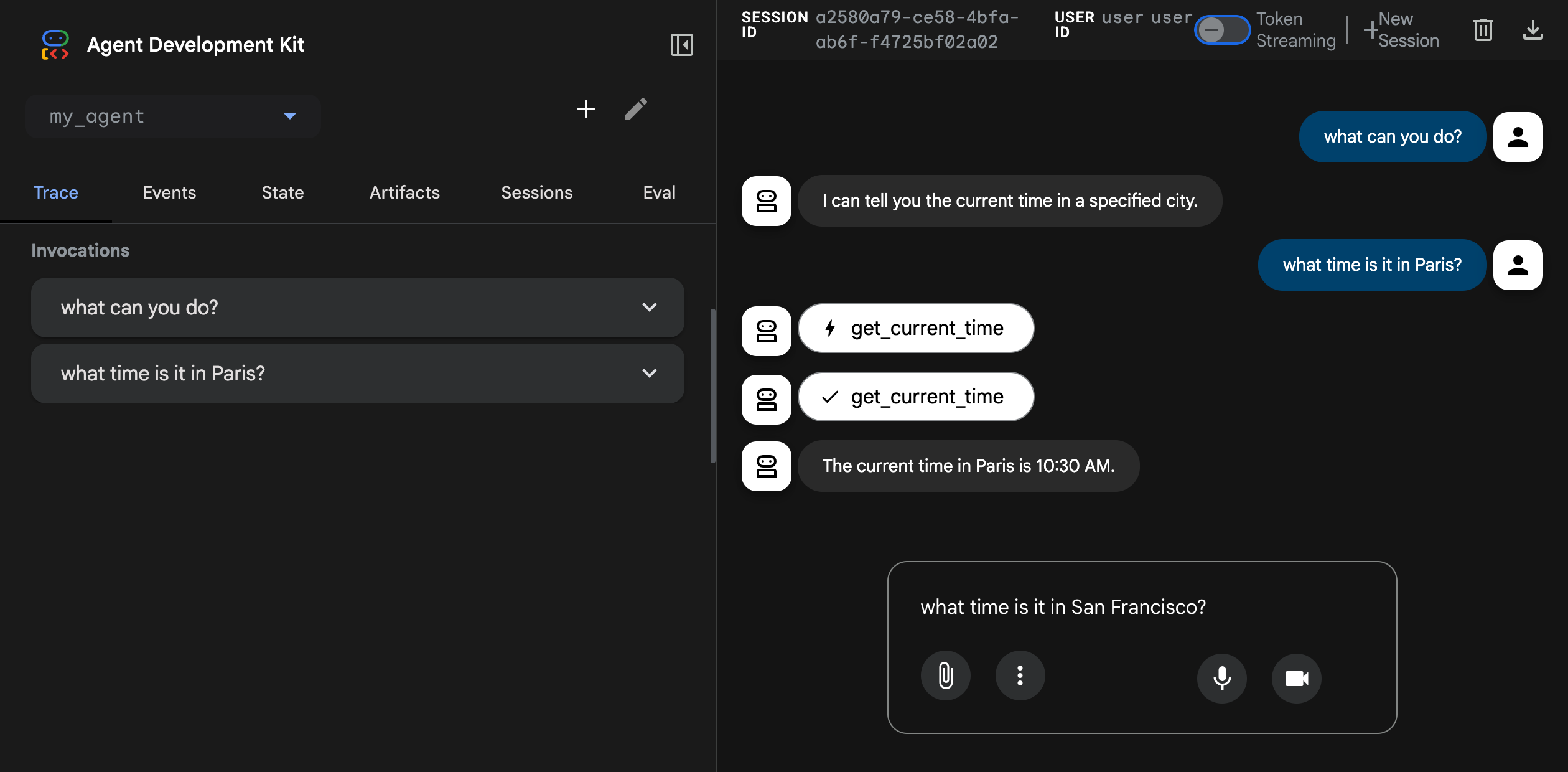Python Quickstart for ADK¶
This guide shows you how to get up and running with Agent Development Kit (ADK) for Python. Before you start, make sure you have the following installed:
- Python 3.10 or later
pipfor installing packages
Installation¶
Install ADK by running the following command:
Recommended: create and activate a Python virtual environment
Create a Python virtual environment:
Activate the Python virtual environment:
Create an agent project¶
Run the adk create command to start a new agent project.
Explore the agent project¶
The created agent project has the following structure, with the agent.py
file containing the main control code for the agent.
Update your agent project¶
The agent.py file contains a root_agent definition which is the only
required element of an ADK agent. You can also define tools for the agent to
use. Update the generated agent.py code to include a get_current_time tool
for use by the agent, as shown in the following code:
from google.adk.agents.llm_agent import Agent
# Mock tool implementation
def get_current_time(city: str) -> dict:
"""Returns the current time in a specified city."""
return {"status": "success", "city": city, "time": "10:30 AM"}
root_agent = Agent(
model='gemini-3-pro-preview',
name='root_agent',
description="Tells the current time in a specified city.",
instruction="You are a helpful assistant that tells the current time in cities. Use the 'get_current_time' tool for this purpose.",
tools=[get_current_time],
)
Set your API key¶
This project uses the Gemini API, which requires an API key. If you don't already have Gemini API key, create a key in Google AI Studio on the API Keys page.
In a terminal window, write your API key into an .env file as an environment variable:
Using other AI models with ADK
ADK supports the use of many generative AI models. For more information on configuring other models in ADK agents, see Models & Authentication.
Run your agent¶
You can run your ADK agent with an interactive command-line interface using the
adk run command or the ADK web user interface provided by the ADK using the
adk web command. Both these options allow you to test and interact with your
agent.
Run with command-line interface¶
Run your agent using the adk run command-line tool.

Run with web interface¶
The ADK framework provides web interface you can use to test and interact with your agent. You can start the web interface using the following command:
Note
Run this command from the parent directory that contains your
my_agent/ folder. For example, if your agent is inside agents/my_agent/,
run adk web from the agents/ directory.
This command starts a web server with a chat interface for your agent. You can access the web interface at (http://localhost:8000). Select the agent at the upper left corner and type a request.

Caution: ADK Web for development only
ADK Web is not meant for use in production deployments. You should use ADK Web for development and debugging purposes only.
Next: Build your agent¶
Now that you have ADK installed and your first agent running, try building your own agent with our build guides: